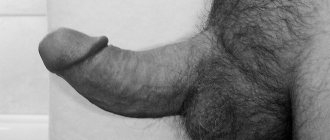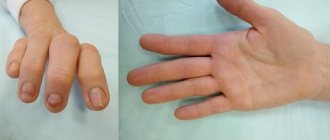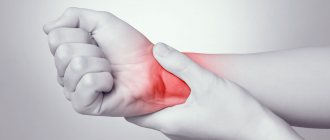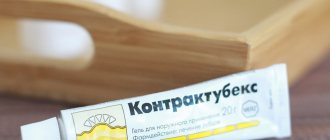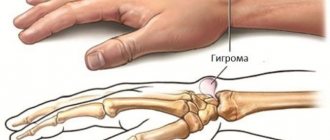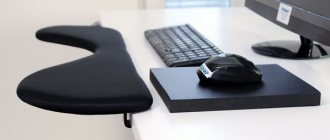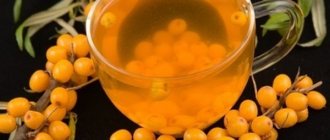Home > Fingers hurt
Dupuytren's contracture is a hand deformity that develops over the years. Pathological changes affect the palmar aponeurosis - a sheet of connective tissue under the skin of the palm. Nodules of tissue that form under the skin unite into a dense fibrous band and can pull one or more fingers into a permanently flexed position.
NB! Contracture of the fingers (a forced position with limited movement) is not always caused by palmar fibromatosis. Limitation of movement may be caused by trauma or neurological disorders.
The affected fingers do not fully extend, which makes everyday hand function difficult: difficulty putting your hand in a pocket, difficulty or impossible to put on gloves, difficulty shaking hands.
Dupuytren's contracture usually affects the ring or little finger and is more common in older men. A doctor has some tools in his arsenal that can make life easier for a person with Dupuytren's contracture.
Symptoms
The disease progresses slowly, usually over several years. Dupuytren's contracture begins with the appearance of lumps on the palm. Gradually, the skin wrinkles and characteristic indentations appear. You can feel a firm mass under the skin, which may be tender to the touch but is rarely painful.
In later stages of Dupuytren's contracture, strands of fibrous tissue from the palm extend to the fingers. As it progresses, these cords may curl the fingers toward the palm.
Most often this happens with the little finger or ring finger, but it also happens with the middle finger. The thumb and index finger are rarely involved in the pathological process.
/wp-content/uploads/2017/05/VID_20170601_123940.mp4
There are frequent cases of bilateral lesions. One hand is usually more involved than the other.
Stages of development of Dupuytren's contracture
Taking into account existing statistical data, it can be stated that Dupuytren's contracture of the hand is observed in 3% of people in the world. Moreover, the most susceptible to the disease are males in the age category - from 40 to 60 years. In women, this pathological process is quite rare, in only 4-5% of cases.
Taking into account how pronounced palmar Dupuytren's contracture is, the following stages of development of the disease are distinguished.
First stage
It is characterized by the presence of a small subcutaneous nodule located under the ring finger. In this case, the patient does not feel any discomfort and continues to perform the usual hand movements. The fingers also do not lose their activity at this stage. As a rule, such nodules resemble ordinary calluses of a working person.
Second stage
Progressive stage. During this process, a scar cord appears on the palm. In this case, redness and roughening of the skin in this area are observed. Mobility in the damaged finger deteriorates and, most often, its ability to fully extend is impaired. However, pain syndrome is not detected in this case.
Third stage
The area of spread of the fibrous cord covers the entire finger. In this case, the skin located near the seal takes on a folded and wrinkled appearance. The affected finger is located at an angle of 90° relative to the palm. In addition, in this situation, a sudden deterioration in functional characteristics is monitored.
Patients note the absence of any pain in this part of the body. However, it is quite difficult to move this limb. At this stage, fusion of the joint surfaces may be observed.
Fourth stage
The affected area covers the entire palm or several fingers at once. As a rule, they coalesce into one large scar. The first injured finger assumes a bent position without the possibility of changing it, and significant deformation of the hand occurs. In some situations, patients note the appearance of severe aching pain, which is constant. The ability of the hand to perform any movements in this case is reduced to zero.
Make an appointment Online booking
- Clinic on Krasnopresnenskaya +7 (499) 252-41-35 Volkov lane, 21
- Clinic on Varshavskaya +7 (499) 610-02-09 Varshavskoe highway, 75, building 1
- Clinic in Annino +7 (495) 388-08-08 Varshavskoe highway, 154, building 1
Risk factors
Although we do not know the exact cause, there are some factors associated with this pathology:
- Age. Dupuytren's contracture most often occurs after 50 years of age.
- Floor. Men are significantly more susceptible than women. Severe degrees of the disease are more common in men.
- Heredity and genetics. The disease is often inherited. Dupuytren's contracture is typical for residents of northern Europe.
- Tobacco and alcohol. Smoking increases the risk of developing Dupuytren's contracture, possibly due to capillary damage and chronic tissue ischemia. Alcohol abuse also worsens the prognosis.
- Diabetes. There are reports of an increase in the incidence of Dupuytren's contracture among diabetics.
Palmar fibromatosis
Dupuytren's contracture
is a fairly common hand disease. Most often the ring finger and (or) little finger are involved in the process. Often Dupuytren's contracture develops simultaneously on both hands. The exact cause of the disease is unknown. It is most common in middle-aged men. There is a clear hereditary predisposition to this disease. The incidence of this disease in men is several times higher than in women. Residents of Scandinavia, Ireland and people from Eastern Europe are most susceptible to this disease. The disease may have an acute onset, but in most cases, severe symptoms appear only several years after the onset of the disease.
Complications
Dupuytren's contracture impairs hand function. Since the thumb and index fingers are rarely used, many people cope with everyday tasks for quite a long time - with three fingers it is quite possible to write and pick up small objects. As it progresses, it becomes impossible to fully open the palm and grasp large objects (grasp) or fit the hand into narrow spaces (pockets). In later stages, dirt can accumulate in permanent folds of the skin and cause ulcers that will not heal.
Methods in our treatment center
The purpose of the operation in most cases is partial or almost complete excision of the palmar fascia and fibrous cords connecting the fascia to other tissues of the hand. As a result of the use of the surgical method, according to reviews, most patients experience a positive effect; finger movements are restored in full after a short rehabilitation.
In addition to surgical intervention at the Central Clinical Hospital of the Russian Academy of Sciences in Moscow, specialists in palmar fibromatosis can prescribe treatment without surgery, for example, a fairly effective method of shock wave therapy (SWT), ultrasound, massage, etc.
Preparation for inspection
Of course, you can show your hand to your local therapist or surgeon at the clinic. He will refer you to a hand surgery specialist.
Before the inspection, formulate answers to the following questions:
- Do your relatives have similar problems?
- What treatment have you already tried? How did this help?
- What medications do you use regularly?
The doctor will also ask you:
- How long ago did you notice the first symptoms?
- Does it get worse over time?
- Is there pain in your hand?
How much does contracture interfere with everyday life?
Forecast
When this pathology is detected, it is difficult to predict the nature of its further course, since it depends on the individual characteristics of each patient’s body. Thus, in one situation, a slight decrease in motor functionality can be observed for decades, in another, the rapid development of the disease is monitored.
In any case, the disease will certainly enter its final stage. In this case, the only effective way is to perform surgical intervention.
Treatment
Because the disease progresses slowly, is not painful, and is not always very bothersome, treatment may not be required. In the initial stages, observation may be sufficient. The palm-on-table test can be performed at home at some intervals.
Treatment consists of destroying or removing the cords that tighten the fingers. This can be done in several ways. The choice depends on the degree of contracture, comorbidities, and patient and surgeon preference. No matter how radical and categorical this may sound, at the moment Dupuytren’s contracture = surgery.
Preventive actions
Until now, experts have not been able to find the true causes of palmar fibromatosis. As a result, until now there are no specific measures to prevent the disease.
However, in order to minimize the likelihood of pathology, for those patients who have a genetic predisposition to Dupuytren's contracture, doctors advise against abusing alcoholic beverages and tobacco products. In addition, it is recommended to practice a healthy diet and abandon a specialty associated with excessive stress on the hands.
Needle technique
The fibrous cord can be crossed with an injection needle through punctures in the skin and the finger can be straightened. The contracture usually returns, then the procedure can be repeated.
The main advantage of needle (or needle) aponeurotomy is that there is no incision, and the operation can be performed on both arms at the same time.
Postoperative management is simple and the person quickly returns to normal activities. The main disadvantage is an earlier relapse and the possibility of damage to the nerve or tendon (which is extremely rare in reality).
Needle aponeurotomy can also be used for the staged treatment of severe Dupuytren's contracture. At the first stage, the fibrous cord is unbent with the help of punctures; as a rule, it is not possible to bring it into a straight position, but it is possible to transfer the 4th stage to the second. A person immediately becomes more comfortable using his hand. And after 5-6 months it is already possible to carry out a full-fledged open aponeurotomy and “adjust the finger.” This method allows you to speed up rehabilitation after surgery and reduce the risk of complications, because during the time between stages the skin has time to stretch, and the joints “remember” their normal range of motion.
Mechanism of injury/Pathological process
The exact etiology of Dupuytren's disease is unknown, but researchers have identified a number of risk factors. Most often, the disease is found in representatives of the white Caucasian race in Northern Europe. On average, the disease occurs at 60 years of age, and the incidence rate increases with age. More often the disease affects men, but in older age the gender boundary is erased.
Twin and family studies indicate that Dupuytren's disease has a strong genetic component. Thus, members of families where the disease has already occurred may have more severe forms of contracture or may experience it at an earlier age. Studies of the prevalence and phenotype of the disease in different ethnic populations also indicate geographic association and genetic predisposition.
Numerous suggestions have been made about the influence of external factors on the development of the disease. However, some of them are very contradictory. Suspected environmental risk factors include alcohol consumption, smoking, manual labor or exposure to vibrations, elevated blood glucose levels, low body weight, low body mass index, and use of anticonvulsants. Dupuytren's disease is often accompanied by a number of other diseases, including epilepsy, diabetes mellitus, HIV, glenohumeral periarthritis and cancer.
Risk factors for Dupuytren's disease
Medication injections
Injecting drugs directly into fibrous tissue can soften or destroy it.
At the time of writing (May 2021), the situation in Russia is as follows:
Pfizer's drug Xiapex is not registered. It is the only collagenase in the world certified for the treatment of Dupuytren's contracture.
Collalysine is not certified for the treatment of Dupuytren's contracture, and I have never learned how to achieve the right concentration.
Fermenkol is at the stage of certification of the injection form.
Kenalog (not an enzyme, but a glucocorticoid) is certified for local injection and is an excellent softener for fibromatous nodes.
Diagnostics
Photo: clinic-vitalis.ru
With Dupuytren's contracture, early diagnosis is extremely important, since treatment in the early stages allows to slow down the progression of the disease, which allows the patient to continue working. It is based on a visual assessment of the patient’s hands (assessing the passive position of the fingers, areas of callus, tubercles on the skin), their palpation (determining subcutaneous nodules and their sizes, joint deformities, aponeurosis compaction) and assessment of impaired motor functions of the hand (maximum extension of the fingers, grasping and holding objects, the rate of hand fatigue). Instrumental diagnostic methods are also important, namely:
- X-ray of the hand, which allows us to judge the degree of damage to the joints.
- Biopsy of the degenerated aponeurosis is used for differential diagnosis.
- Rheovasography allows you to clarify the boundaries of dystrophically altered tissues.
- Computed tomography when deciding on surgical treatment.
Differential diagnosis must be carried out with diseases with similar symptoms and initial manifestations, for example, rheumatoid arthritis, ischemic contracture, scleroderma, tenosynovitis, connective tissue neoplasms.
Operation
The fibrous cord can not only be cut under the skin, but also completely removed. The main advantage of open surgery is the most complete and long-lasting effect compared to closed methods.
The main disadvantage of a full-fledged operation is the longer recovery. The sutures are removed after 2 weeks and the same or even more may be needed to restore function.
In any case, no matter what treatment method we choose, I have no reason to admit the patient to the hospital. Any treatment for Dupuytren's contracture can be performed on an outpatient basis using local anesthesia (unless, of course, you are allergic to local anesthetics).
Brief history
This disease was first described by Felix Platter in 1614. He mistakenly believed that the cause of deformity and contracture of the fingers was dislocation of the flexor tendons. Only in 1822, the English surgeon Cooper suggested that the palmar aponeurosis was affected. A little later in 1832, the French surgeon Guyom Dupuytren most fully described the clinical picture of this disease. Experimentally proved the dominant role in the development and progression of contracture of the fingers - the palmar aponeurosis. He proposed a method of surgical treatment - aponeurotomy, and wrote a monograph La Main de Dieu adorns, dedicated to the problem of treating contracture. It was from this time that a typical deformity of the fingers was called Dupuytren's contracture.
Treatment after surgery
Immediately after suturing the skin, a large sterile bandage is applied, and the hand is placed on a scarf. During the first day, a lot of blood is usually released, so I always wrap a thick “mitten” around my hand. For the first 2-3 days, the hand should be held higher, trying not to lower it below the level of the heart. As soon as the anesthesia wears off (which is 3-4 hours after surgery), you should take painkillers.
Before the stitches are removed, we will meet several times, gradually your “mitten” will become thinner, and your arm will hurt less and less. After 2 weeks, the stitches are removed. It does not hurt! Sometimes it happens that the bandage remains on the arm even after the stitches are removed. With severe contracture, marginal necrosis of the flaps and longer healing of the transverse approach are possible.
After the wound has healed, you can wash your hand and start using it. Under the scars, the skin is initially hard and inactive. It needs to be softened with massage, hand cream, movements and physiotherapeutic procedures.
NB! Classes with a hand therapist improve the results of treatment of Dupuytren's contracture.
Plaster and other means of immobilization are used very rarely, only in special cases.
Full restoration of hand mobility after open aponeurotomy should be expected no earlier than 2 months.
Differential diagnosis
There are other diseases in which flexion contracture of the fingers develops and growths appear on the hand. Differential diagnosis for Dupuytren's disease:
- Corn.
- Epithelioid sarcoma.
- Hygroma.
- Stenosing tenosynovitis.
- Giant cell tumor of the tendon sheath.
- Damage to the flexor tendon.
- Ulnar nerve neuropathy.
- Camptodactyly.
- Fibromatosis and fibromas.
- Palmar (palmar) tendonitis.
Medicines
Photo: kak-bog.ru
Conservative treatment methods can be used at all stages of the disease; they help slow the progression of the disease and improve the general condition of the patient. Treatment is prescribed in short courses and includes the use of medications, including injections directly into the affected tissue, and physical therapy. Groups of drugs used in the treatment of contracture:
- Hormonal drugs. Used in cases of pain that cannot be treated with simple anti-inflammatory drugs. These include Prednisolone, Diprospan, Betamethasone, Dexamethasone. The drug solution along with a local anesthetic is injected into the area of painful nodules. This blockade is effective for 6-8 weeks, after which the pain returns. It should be kept in mind that hormonal medications should only be used as prescribed by a doctor.
- Proteolytic enzymes. This group includes Chymotrypsin, Lidaza, Elastase, Trypsin. They locally accelerate metabolic processes, significantly slow down the formation of scars and soften existing ones. They are used in the form of applicators that are attached directly to the affected hand.
Combined drugs that have a depressing effect on collagen synthesis. For example, Xiaflex is a combination drug that is designed specifically for patients with Dupuytren's contracture. Injections of the drug are made directly into the joints affected by contracture.
